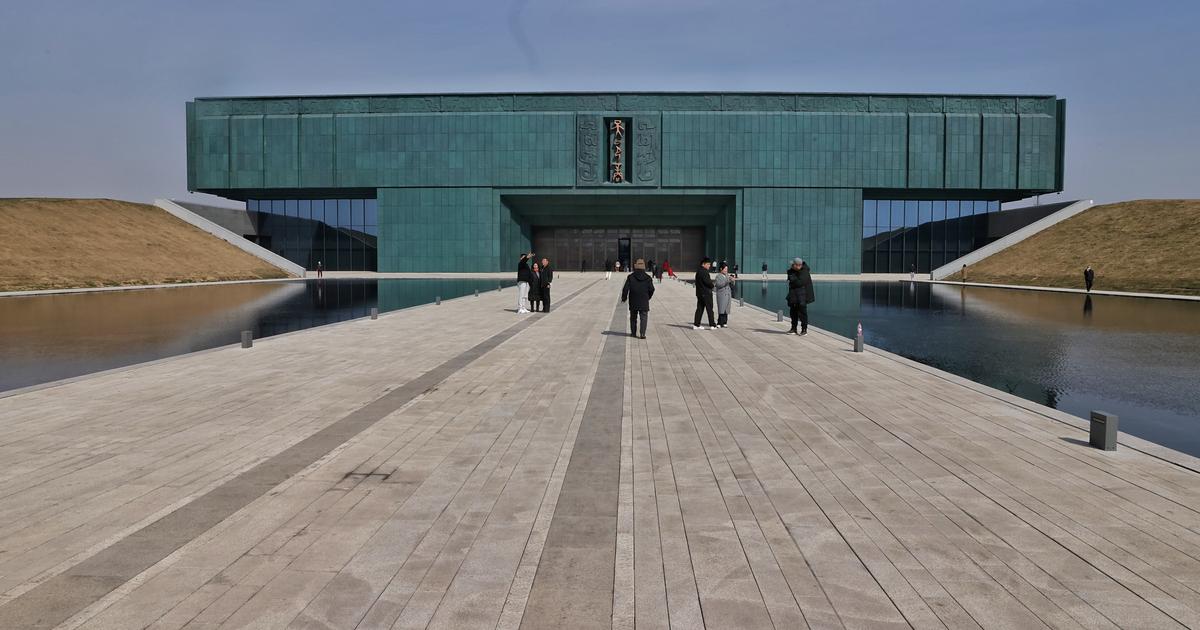Enlarge image
Buildings in Buenavista according to the direction of the sun
Photo: Takeshi Inomata / dpa
For the Maya of Central America, time was magical.
In their partly huge cities, priests and rulers of the ancient people once dealt in detail with the counting of eternity.
For this, sky observers and arithmetic experts created one of the most complex calendar systems ever.
It was not structured in steps of ten, but was based on a system of 20.
The Maya priests were busy with several calendars at once.
In addition to the so-called long count, which made headlines a few years ago because of an alleged prophecy of the end of the world, there was also a ritual calendar, the tzolkin.
It was used for religious events.
more on the subject
Last great city of the Maya culture: why Mayapán fell
Cave in Uxul: How an archaeologist solves a mass murder in Mayan times by Jörg Römer
Scientists have now been able to show that this calendar is apparently many centuries older than previously known.
From the analysis of hundreds of ceremonial centers in southern Mexico, Ivan Šprajc, Takeshi Inomata and Anthony Aveni conclude that people aligned these structures at least 3000 years ago - i.e. around the year 1000 BC - in particular according to the course of the sun and in doing so based on the ritual calendar oriented.
The oldest evidence of the use of this calendar to date dates from the 3rd century BC.
"The orientation of the appendices reflects attention to both the annual movement of the Sun and other events in the firmament, and shows that observations leading to the sophisticated astronomical knowledge of the Classical and Postclassic periods were available nearly a millennium before they were written were recorded,« write the researchers in the journal »Science Advances« .
The Mayan ritual calendar tzolkin comprised a cycle of 260 days – 13 months of 20 days each.
Each day is combined with a number and a deity.
This ritual calendar is used with a 365-day annual calendar required by the Maya for everyday use, which roughly corresponded to the solar year.
Traces of the calendar can be found everywhere in the former settlement area of the Maya, whose heyday lasted from about 300 to 900 AD.
It extends from present-day southern Mexico through Guatemala and Belize to Honduras and El Salvador.
Last April, two fragments of lime plaster from the 3rd century BC were found at the Mayan site of San Bartolo in northern Guatemala, bearing a painted date of the ritual calendar.
Analyzes indicated that the calendar had been in use for some time at the time, but there was no concrete evidence of this until now.
The team led by Šprajc from the Slovenian Academy of Sciences and Arts is now delivering this.
Using the so-called lidar method, the researchers examined the area along the southern Gulf of Mexico for conspicuous soil structures.
Using Lidar (Light Detection And Ranging) technology, aircraft-borne lasers scan the Earth's surface, revealing structures hidden even under lush vegetation.
On an area of around 85,000 square kilometers - which is almost the same as Bavaria and Thuringia combined - the team came across more than 400 standardized building complexes with a clearly recognizable orientation.
They date from 1100 BC to 250 BC and were built by the Olmec and Mayan cultures.
Almost 350 of the layouts contained east-west alignments of buildings.
For nearly 90 percent of them, this alignment is related to the position of the sun on specific dates in the annual cycle, the team writes.
Accordingly, orientation to the sunrises on February 11 and October 29 was common: There are 260 days between these two dates - i.e. exactly one cycle in the ritual calendar.
For example, in one facility, two central elevations are built in such a way that their extension to the east almost exactly meets an elevation 380 meters away, over which the sun rose on those two days.
The researchers emphasize that such an orientation is particularly common in plants from the period from 1100 BC to 750 BC.
This is the earliest evidence of the use of the 260-day calendar and astronomical knowledge in Central America.
The team also describes other alignments of facilities that are said to be related to the position of, for example, the Moon, Venus or the star Fomalhaut.
The erection of the early building complexes went hand in hand with the beginning of agriculture, i.e. the cultivation of corn, and increasing sedentariness, writes the team.
"Since calendars aligned with the solar horizon can only function through observations from a fixed point, the assumption of more sedentary lifestyles must have been the basis of this development."
The Olmec were also interested in the period
The team sees an early alignment with the ritual calendar in San Lorenzo, the earliest major ceremonial center in Central America in what is now the Mexican state of Veracruz.
This complex of the Olmec, known for their colossal heads, had its heyday between 1400 and 1100 BC.
The system is aligned in such a way that the sun sets behind the Zempoaltépetl mountain in the neighboring state of Oaxaca on the winter solstice.
In addition, it is lined with 20 platforms - this underlines the importance of this number.
The researchers write that people, some of whom may already have been specialists in astronomy, were already living in San Lorenzo at that time.
dpa/joe






/cloudfront-eu-central-1.images.arcpublishing.com/prisa/HMPBOPAW6ZCXHIH5YI4WELTR5Q.jpg)


